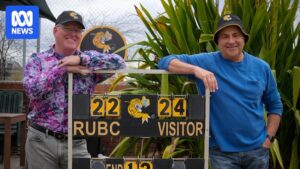
The European Space Agency (ESA) has inaugurated a cutting-edge deep space communication antenna in Western Australia, enhancing its capability to maintain contact with spacecraft journeying across the Solar System. The facility, known as New Norcia 3, is the latest addition to ESA’s Estrack tracking network and the second antenna at the New Norcia site, located approximately 120 kilometres north of Perth.
This 35-metre dish, weighing approximately 620 tonnes, integrates advanced technology designed to capture extremely faint signals from distant missions. To achieve this, parts of its receiver system are cooled to nearly minus 263 degrees Celsius, significantly reducing interference and enabling the reception of data transmitted from billions of kilometres away.
The inauguration, held on October 4, 2025, marked a significant expansion of ESA’s communication capacity for scientific, exploration, and planetary defence missions. The ceremony was led by ESA Director General Josef Aschbacher, with Australian Space Agency Head Enrico Palermo and ESA Director of Operations Rolf Densing in attendance, alongside Western Australia’s Minister for Regional Development Stephen Dawson.
International Collaboration in Space Science
Also present at the event was Sabine Winton, the state’s Minister for Education, Early Childhood, Preventative Health, and Wheatbelt, underscoring the collaborative effort between Europe and Australia in advancing space science. This partnership highlights the growing importance of international cooperation in the exploration and understanding of space.
Once operational in 2026, the antenna will provide crucial support for ESA’s flagship missions, including Juice, Solar Orbiter, BepiColombo, Mars Express, and Hera. It is also set to play a pivotal role in upcoming projects such as Plato, Envision, Ariel, Ramses, and Vigil, which aim to study distant planets, monitor solar activity, and enhance planetary defence.
Technological Advancements and Strategic Importance
Officials emphasized that the addition of this antenna not only grants Europe greater independence in space communications but also establishes a stronger foundation for long-term exploration. The strategic location in Western Australia offers critical southern hemisphere coverage, making the station an essential link in global deep space tracking efforts.
With this facility, ESA is positioning itself to meet the increasing demands of space science over the coming decade. The move represents a significant step forward in the agency’s ability to support a wide array of scientific and exploratory missions, ensuring that Europe remains at the forefront of space exploration.
Looking Forward: Implications for Future Missions
The inauguration of New Norcia 3 comes at a time when space exploration is becoming increasingly vital to understanding our universe and protecting our planet. The enhanced communication capabilities provided by this new antenna will enable ESA to conduct more complex missions, gather more detailed data, and respond more effectively to potential threats from space.
According to ESA Director General Josef Aschbacher, “This facility is a testament to our commitment to advancing space science and exploration. It not only strengthens our current capabilities but also prepares us for the challenges and opportunities of the future.”
“The New Norcia 3 antenna is a critical asset for ESA, providing us with the tools needed to explore the farthest reaches of our Solar System and beyond,” stated Enrico Palermo, Head of the Australian Space Agency.
As the world continues to look towards the stars, the collaboration between ESA and its international partners will be crucial in unlocking the mysteries of space and ensuring the safety and sustainability of our planet.







